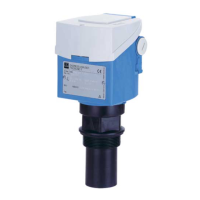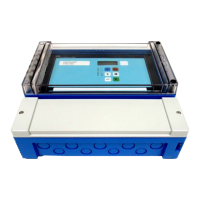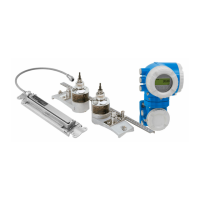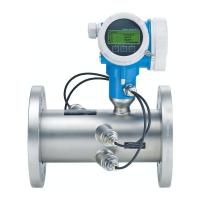Prosonic T FMU30
Endress+Hauser 5
Input
Measured variable The distance D between the sensor membrane and the product surface is measured, see also figure ä 3.
Using the linearization function, the device uses D to calculate:
• Level L in any units
• Volume V in any units
• Flow Q across measuring weirs or open channels in any units
Measuring range The measuring range is limited by the range of a sensor. The sensor range is, in turn, dependent on the
operating conditions. To estimate the actual range, proceed as follows (see also the calculation example in the
diagram):
1. Determine which of the influences shown in the following table are appropriate for your process.
2. Add the corresponding attenuation values.
3. From the total attenuation, use the diagram to calculate the range.
Fluid surface Attenuation
Calm 0 dB
Waves 5 to 10 dB
Strong turbulence (e.g. stirrers) 10 to 20 dB
Foaming Please contact your Endress+Hauser sales representative.
Bulk material surface Attenuation
Hard, rough (e.g. rubble) 40 dB
Soft (e.g. peat, dust-covered clinker) 40 to 60 dB
Dust Attenuation
No dust formation 0 dB
Little dust formation 5 dB
Heavy dust formation 5 to 20 dB
Filling curtain in detection range Attenuation
None 0 dB
Small quantities 5 to 10 dB
Large quantities 10 to 40 dB
Temperature difference between
sensor and product surface
Attenuation
to 20 °C (68 °F) 0 dB
to 40 °C (104 °F) 5 to 10 dB
to 60 °C (140 °F) 10 to 15 dB
Заказывайте на сайте: www.tinnova.ru/endress_hauser/ || Эл. почта: info@tinnova.ru

